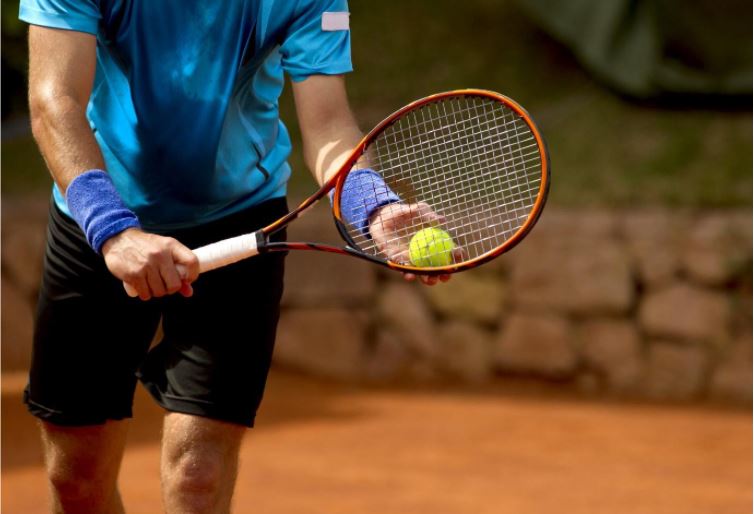Essential Questions When Thinking Of Building Your Own Tennis Court

Taking on large construction projects for your property is understandably going to be an expensive and time-consuming endeavour. Purchasing resources, hiring planners, applying for permits, and employing builders to do the job for you will all add up significantly. If you’re looking into building your own tennis court, this can be a huge undertaking. However, there are some great benefits to building and owning your own court if you’re determined to go ahead with this project. But remember, no project like this should be pursued without the proper research and consideration, so we’ve put together a list of some essential questions and answers you need to think about when making this decision.
Why Create Your Own Court?
First, you’ll want to consider why you’ve chosen to create your own tennis court. Tennis, as you’ll know, is a very entertaining and rewarding sport, providing you and your partner with a great workout of both the body and mind. However, finding a court, especially if you’re living remotely, can be a difficult task. If you have the space and resources, building your own could be a great choice. Not only is it going to provide you with your own court to use whenever you wish, but it will also serve as a multi-purpose area for other things too. Of course, you’ll be able to invite guests over to play tennis with you, but your court could also be used as the perfect space to host events as well. An added benefit to building a nice tennis court is that it will also add a lot of value to your property, so you could consider it an investment.
How Big Are Tennis Courts?
In theory, you can make your tennis court any size you want. But really, you’ll want to stick with the official tennis court dimensions of 120 by 60 feet. This, however, isn’t the size of the lined court itself. These dimensions cover the area surrounding your court, too, which will allow you and your opponents and partner to freely run off the court and serve properly too. While you have the freedom to make the excess space around your court as big or as small as you want, you do need some space around the play area; otherwise, you’re not going to have a comfortable game.
Do You Have The Space?
This ties into this next consideration, and that is whether or not you have the space you’d need for your tennis court. Taking that 120 by 60 feet measurement into account, you’ll also want to make sure you have substantial space around that area for access to your court and that you’re not going to cut into any important areas of your property such as yard access or even areas with great views. A court can look very impressive, but you don’t want to risk your tennis court detracting from the surrounding area’s natural beauty. Draw up some plans to determine where you want to situate your tennis court and identify any potential issues with this before committing to the project.
Should You Enclose Your Court?
Another thing to consider is whether or not you’ll be enclosing your tennis court or not. Losing tennis balls into the surrounding undergrowth of flowerbeds and even outside of your property from an exceptionally powerful serve can cause problems for wildlife as well as your neighbours. If there’s a chance that your tennis balls could leave the area and become difficult to retrieve without an enclosure, then you’ll probably want to look at getting one. You can find pitch dividers, surround systems, and even windbreaks to hang from the fences at sports suppliers such as Edwards Sports Products. An enclosure can not only reduce your risk of stray tennis balls, but it can help to reduce debris from being blown onto your court, which could require excessive cleaning.
Is An Indoor Court A Good Option?
An alternative option here would be to create a fully indoor tennis court. The benefits to this are that you have no concerns with littering your property with wild tennis balls, and you also don’t have to worry about weather conditions either. Only being able to play a game of tennis during the warmer months will likely take away a lot of the appeal of your court, with it becoming somewhat abandoned in the cold wintertime. It also allows you to play through the bad weather too, as heavy rain would otherwise ruin a tennis match. The downsides to this include the appearance of the court. Having an indoor will often look like a giant box on your property without an architect’s proper, considered design work. Another issue is that, while bad weather can ruin a game, bright and sunny weather can make one, and shutting the sun and fresh air out of your game may ruin things too. Ultimately, you’ll also want to consider which option is going to add the most value to your home.
What Should Your Court Be Made Of?
There are a few generally accepted materials for people to build the actual tennis court surface out of. The most traditional option, if you’re so inclined, is to have a grass court. These are the same as you’d see at Wimbledon and provide you with slightly less bounce than a harder court would, leading to more volleys and serve-focused playstyles. If you’re less about speed and power and are more interested in getting some longer rallies going, a clay court allows for a more tactical playstyle. The material used in a clay court will often reduce the speed of the ball as it lands while allowing it to bounce much higher, providing players with those few extra seconds of tactical calculation. There are also standard hard courts that possess an acrylic surface. They’re not as slow as a clay court but give players a tiny bit more time to think compared to the low-bounce surface of a grass court.
What Type Of Net Should You Get?
Ideally, your net will sit around 3 feet outside of your lined court, either side. A doubles court is generally 36 feet wide, and so your net should be 41 feet wide by those calculations, whereas a singles court is only 27 feet and therefore, yoursneeds to be 33 feet instead. Outside of choosing which width you need for your court, you’re going to want to choose a fairly durable option for the netting. If outside, you’ll want one that is weatherproof and one with posts that won’t rust easily. The best materials you can choose for the netting itself are either polyester or polyethene, as they will retain their appearance when exposed to the sun and the elements far better than other materials. And, generally speaking, thehigher the thickness of the netting itself, the sturdier it will be, and the longer it will last before you need to look at getting a new one.
How Much Will This Project Cost?
As you can see, there are many elements to building a tennis court, and you can easily build a more budget court compared to a pristine, tournament-quality court, complete with your own stands and lighting systems. Ultimately, you’ll be looking to pay anywhere between £20k to £50k based on what options you choose. Therefore, we recommend doing as much research as you can before taking the plunge. Owning your own tennis court is fantastic and can be a very rewarding experience but remember that it’s an investment and should be done the right way so that you can get the best out of it.




